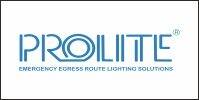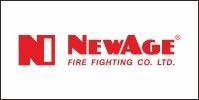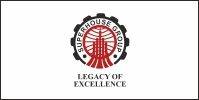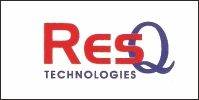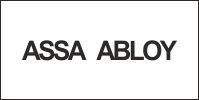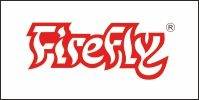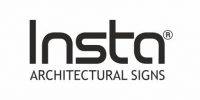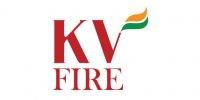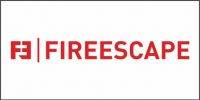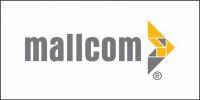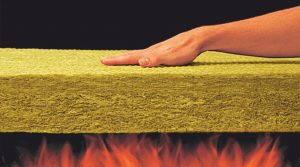 Due to its natural basalt rock and recycled slag composition, stone wool exhibits a number of unique and valuable characteristics, including its ability to resist fire, water and mold. With code changes, increased product knowledge and changes in building practices, the need for improved fire resistance in all buildings is gaining greater attention to improve the built environment and safeguard those who use and occupy structures around the world. Stone wool insulation, with its unique and beneficial properties, is moving to the forefront when it comes to insulating to achieve passive fire protection.
Due to its natural basalt rock and recycled slag composition, stone wool exhibits a number of unique and valuable characteristics, including its ability to resist fire, water and mold. With code changes, increased product knowledge and changes in building practices, the need for improved fire resistance in all buildings is gaining greater attention to improve the built environment and safeguard those who use and occupy structures around the world. Stone wool insulation, with its unique and beneficial properties, is moving to the forefront when it comes to insulating to achieve passive fire protection.
The benefits of stone wool insulation are ideal for sandwich wall panel (SWP) applications given the fact that stone wool is non-combustible, inorganic, and will not contribute to harmful smoke or toxic gases in the event of a fire. In addition, stone wool provides superior thermal performance, while offering the added benefits of environmental sustainability, moisture resistance and excellent sound absorption. Stone wool is traditionally used in commercial and industrial buildings for interior walls, curtain walls, cavity walls and low slope roof applications. However, its use in one, two and three-hour, fire-rated SWPs and other OEM applications such as fire doors and partition walls, alike, are being further explored due to the increasing demand for improved fire resistance in buildings, stricter building codes and the rising trend towards environmentally sustainable building products. Enduring temperatures up to 2,150°F (1,177°C), stone wool is non-combustible and does not promote smoke or flame spread when exposed to flame.
SWPs manufactured using combustible insulation materials result in a range of challenges. Most importantly, if the combustible core materials ignite, the metal sheeting on the surface usually screens this insulation from an active fire prevention system such as sprinklers or other extinguishing systems. As a result, a fire inside the panel can spread quickly. Furthermore, many combustible insulation materials could release toxic gases and particulate matter into the air during a fire. This could impact fleeing occupants, firefighters and the overall environment.
Materials do matter. Non-combustible materials in passive fire protection provide an extra measure of dependability. Stone wool insulation can contribute significantly to occupant comfort and safety, while providing efficiencies and savings for owners throughout the lifetime of a building. Stone wool is highly effective in fire stop applications, helping to achieve compartmentalization. Because of its high melting point, it potentially provides more escape time to occupants in the event of a fire. Additionally, that stone wool insulation material will not contribute to toxic smoke or fumes makes a serious case for its integration in passive fire protection systems. The statistics surrounding fire-related deaths are very clear – smoke, not burn-related injuries, is the primary cause of most fire-related deaths.
According to the U.S. National Fire Protection Association, smoke often incapacitates so quickly that people are overcome and can't make it to an otherwise accessible exit. As a fire grows inside a building, it will often consume most of the available oxygen, while toxic gases build. As stone wool insulation is certified non-combustible by CAN4-S114 standards, it will not develop toxic smoke or promote flame spread, even when directly exposed to fire, as most other insulation materials do. In fact, when tested in accordance with ASTM E 84 (UL723), stone wool results typically show a flame spread of 0 and a smoke development of 0 – among the lowest of all insulating materials. By comparison, various foam plastic insulations, when tested to ASTM E 84, typically achieve a flame spread of 25 and smoke development in the 250 to 500 range. Stone wool insulation used in passive fire protection systems can help to save lives and protect the structural integrity of a building by reducing the chance of it collapsing due to flame spread, thereby minimizing damage. As such, it can help to create a safer environment for firefighters, reduce environmental damage, and help lessen restoration costs.
Why opt for a non-combustible core SWP?
With regards to SWPs specifically, the demand for stone wool, especially in North America, lags behind Europe. This is because the need for SWPs with a non-combustible core in Europe is different than it is around the world. European demand accelerated significantly in the 1990s as a result of the number of fires in the United Kingdom (UK) that involved SWPs with combustible core insulation. Total fire losses in the UK food processing industry, where SWPs with combustible insulation were used, were more than $38 million USD in 1995 alone. One dramatic example in France is the fire that occurred at the Bordeaux Meat Packing Plant. Fire within the combustible insulation in the SWPs spread at a remarkable rate of 2.1 metres per minute. Firefighters arrived on the scene within 10 minutes after the first alarm. In that time, 6,000 square metres had already been destroyed.
As a direct response to this disaster and catastrophes of this nature, the European market established a series of regulations and test methods targeted at the design and use of SWPs. The fire test methods ranged from small, to intermediate, and large-scale tests. As a result, proper specifications and enhanced fire safety management procedures have significantly reduced the number of fires involving SWP products in Europe. Now, UK's insurance industry will only certify products that have been subject to large-scale fire tests where SWP products with non-combustible cores – such as stone wool insulation – are permitted.
In most parts of the world, non-combustible, fire-rated SWPs are part of a niche market – albeit a growing one. Because building owners are becoming more aware of the shattering effects fire can have on their livelihood and the environment, interest has been climbing for fire-rated, sustainable alternatives. The migration of European manufacturers familiar with stone wool SWP advantages is also creating demand as well as bolstering product knowledge in North America.
As changes in the industry and evolution of codes and standards continue to take place, the specifying community needs to respond so that passive fire protection solutions will continue to evolve for the better. The status quo mindset that automatically opts for traditional insulating materials, such as expanded polystyrene (EPS) and rigid polyurethane foam (PUR/ PIR or polyisocyanurate), must continue to be challenged to consider alternatives that offer a safer solution. Stone wool insulation, with its inherent ability to withstand extremely high temperatures, as well as its additional benefits of sound absorption, moisture
resistance, dimensional stability, sustainability and long-term thermal performance, is proving to be an obvious choice for SWP insulation and other passive fire protection systems, such as fire doors, beam/structural systems and prefab tunnel protections.
Code requirements
When it comes to code compliance, the key benefit of using SWPs or other OEM applications with non-combustible cores can be summed up in one word: simplicity. All of the confusion, complexity and ambiguity can be easily eliminated by specifying with a non-combustible core such as stone wool. Depending on where and how the products are used, SWPs, specifically, have to meet numerous requirements. The requirements of various fire tests are determined by many factors. Building type, size and use, as well as distances to adjacent property lines and the percentage of unprotected openings in the exterior wall – such as non-fire-resistant windows and doors – are among the many considerations.
Canadian and U.S. codes (for example, the 2005 National Building Code of Canada and the 2009 International Building Code) contain specific requirements for SWP applications incorporating “foamed plastics”, though these requirements aren't always applicable to all SWP products, particularly those that do not contain foam plastic cores. North American code requirements are separated into the following three groups, categorized by fire performance:
1. Flame spread, combustibility and interior fire growth
2. Exterior wall applications
3. Fire resistance rated assemblies
The types of materials used in SWPs and the purpose of the wall determine the rules of each code. SWPs with foam plastic cores have various additional restrictions related to building height, sprinkler protection, use of thermal barriers and distance between adjacent property lines. In contrast, SWP products with non-combustible cores, such as stone wool, are far less restricted and much less complicated to use from a building code perspective.
Growth potential
Stone wool offers a vast array of safety, comfort and efficiency benefits and has the ability to meet or exceed standards and rigorous testing requirements, as well as more advanced building codes. Based on this, it is expected that the use of stone wool insulation in passive fire protection systems – including SWPs – will gain increasing traction among specifiers, consultants and engineers charged with ensuring today's buildings are built stronger, safer, more efficiently and more sustainably than ever before.












